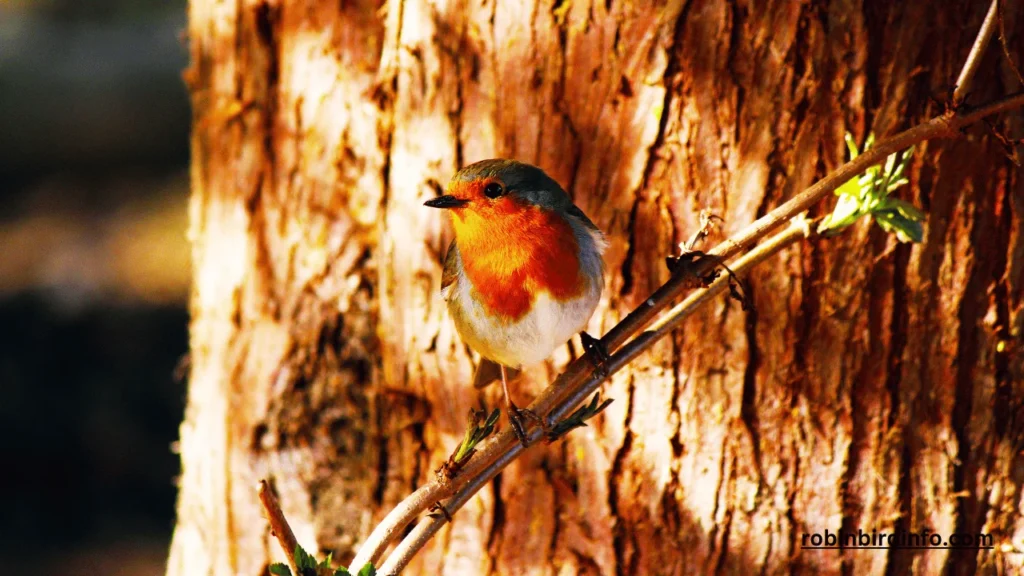Have you ever been startled by a seemingly harmless robin dive-bombing your head?
Don’t worry, you’re not alone. These cheerful, red-breasted birds, often heralding the arrival of spring, can turn surprisingly aggressive, especially during a certain time of year. But what exactly triggers this territorial rage and why should it matter to you?
Understanding robin migration patterns goes beyond simply appreciating their cheery song. Their return north is a vital sign that winter’s grip is loosening, and nature’s intricate dance of life is about to begin again.
By delving into the fascinating world of robin migration, we can not only predict the changing seasons but also gain a deeper appreciation for the delicate balance of our local ecosystems.
So, grab a cup of tea, settle in, and let’s unlock the secrets behind the robin’s red rage – a surefire sign that spring is just around the corner.
Contents
The Timing of Spring Migration
Seasonal Cues: As days grow longer and temperatures rise in the spring, American Robins are triggered to begin their northward migration. The increasing availability of food, such as insects and berries, also plays a role in stimulating their migration.
Regional Variations: The timing of Robin migration can vary across different regions of North America. Robins in southern regions may begin their migration earlier than those in northern regions, as they experience warmer temperatures and earlier blooming of plants.
Individual Variation: Individual Robins may vary in their timing of migration due to factors such as age, sex, and overall health. Older, more experienced birds may migrate earlier than younger birds.
Migration Routes
Return Routes: American Robins follow similar migration routes as they do in the fall. They often return to the same breeding grounds where they were born or raised.
Stopover Sites: During their northward journey, Robins rely on stopover sites to rest and refuel. These sites provide essential food and water resources for the birds.
Factors Influencing Migration Routes: Various factors, such as weather conditions, food availability, and the presence of predators, can influence the specific routes taken by individual Robins.
The Challenges of Spring Migration
Weather Conditions: Adverse weather conditions, such as storms and cold fronts, can pose significant challenges to migrating Robins. Strong winds and heavy rain can delay their progress and increase the risk of mortality.
Predation: During migration, Robins are vulnerable to predation from various predators, including hawks, owls, and cats.
Energy Demands: Long-distance migration requires a significant amount of energy. Robins must rely on their fat reserves to fuel their journey and find food and water along the way.
The Physiology of Spring Migration
Fat Storage: Before migration, Robins accumulate fat reserves to provide energy for their journey. This fat is stored in various parts of their body, including the liver and muscles.
Muscle Power: Strong flight muscles are essential for long-distance migration. Robins have well-developed flight muscles that allow them to flap their wings continuously for extended periods.
Navigation: Robins use a combination of navigational cues, including the sun, stars, and Earth’s magnetic field, to find their way during migration.
Conservation Implications

Habitat Loss and Fragmentation: Habitat loss and fragmentation can impact Robin migration and breeding success. The loss of suitable nesting and foraging sites can reduce the number of successful breeding attempts.
Climate Change: Climate change can alter migration patterns and disrupt the timing of breeding seasons, affecting Robin populations. Warmer temperatures can lead to earlier migrations, which may not coincide with the availability of food resources.
Conservation Strategies: To protect Robin populations during migration, it is important to conserve their habitats, reduce pesticide use, and promote bird-friendly landscaping. Additionally, minimizing light pollution can help reduce the negative impacts of artificial light on migrating birds.
Conclusion
The northward migration of American Robins is a remarkable journey that showcases the resilience and adaptability of these birds.
By understanding the factors that influence their migration, we can appreciate the challenges they face and take steps to protect them. By conserving their habitats and reducing human-caused threats, we can ensure that future generations can continue to enjoy the beauty and song of these beloved birds.
FAQ’s
When do Robins typically migrate north?
The timing of Robin migration can vary depending on geographic location and weather conditions. In general, Robins begin their northward migration in late winter and early spring.
How far do Robins migrate?
The distance that Robins migrate varies depending on their starting location. Robins in northern regions may migrate hundreds of miles south for the winter, while those in southern regions may migrate shorter distances or not migrate at all.
What triggers the northward migration of Robins?
The primary triggers for Robin migration are increasing daylight hours and rising temperatures. These environmental cues signal the onset of spring and the availability of food and nesting sites.
Do all Robins migrate?
Not all Robin populations migrate. Some populations, particularly those in milder climates, may be year-round residents.
What challenges do Robins face during their northward migration?
Robins face various challenges during their northward migration, including adverse weather conditions, predation, and energy limitations. They must also find suitable stopover sites for rest and refueling.
How do Robins find their way during migration?
Robins use a combination of navigational cues, including the sun, stars, and Earth’s magnetic field, to find their way during migration.








